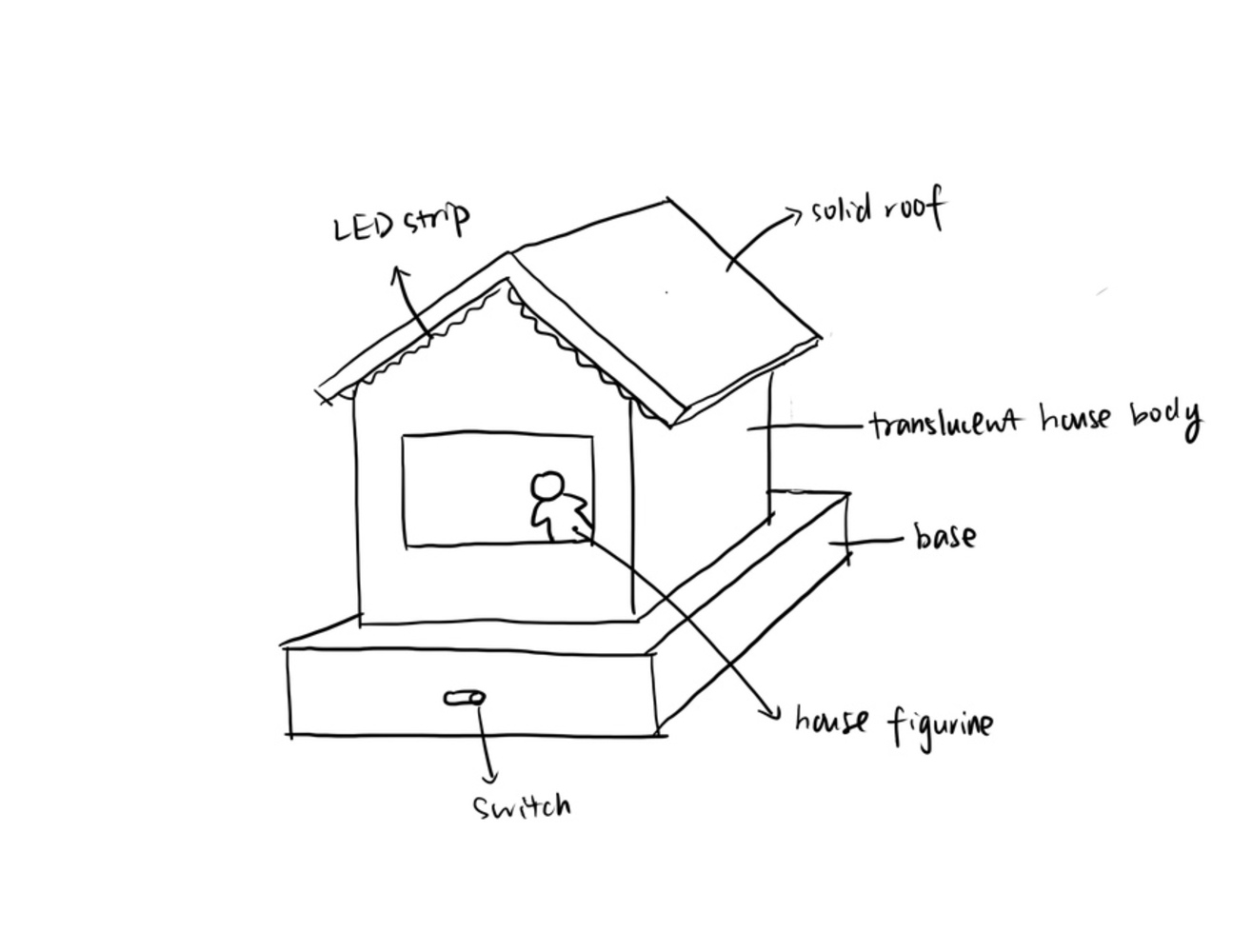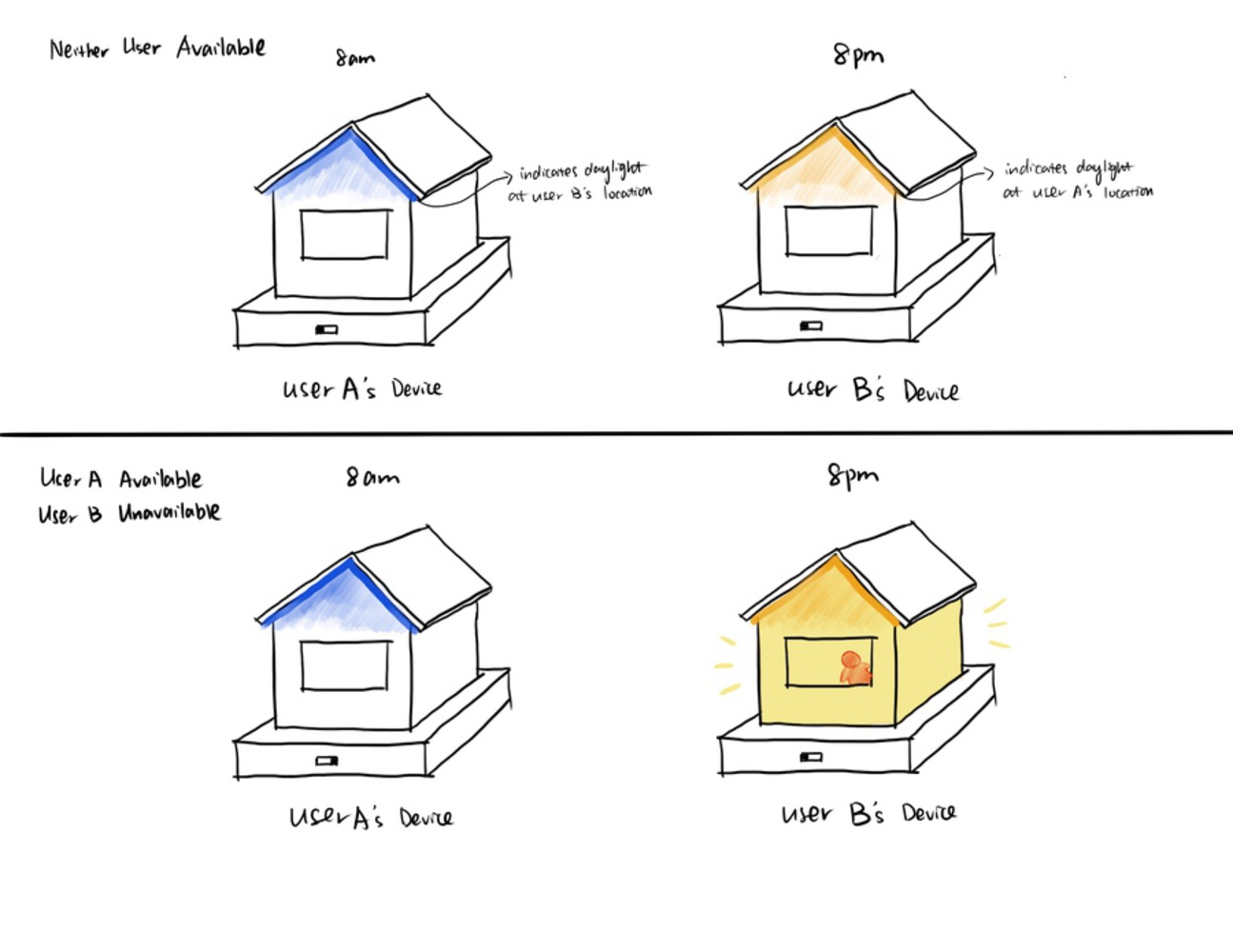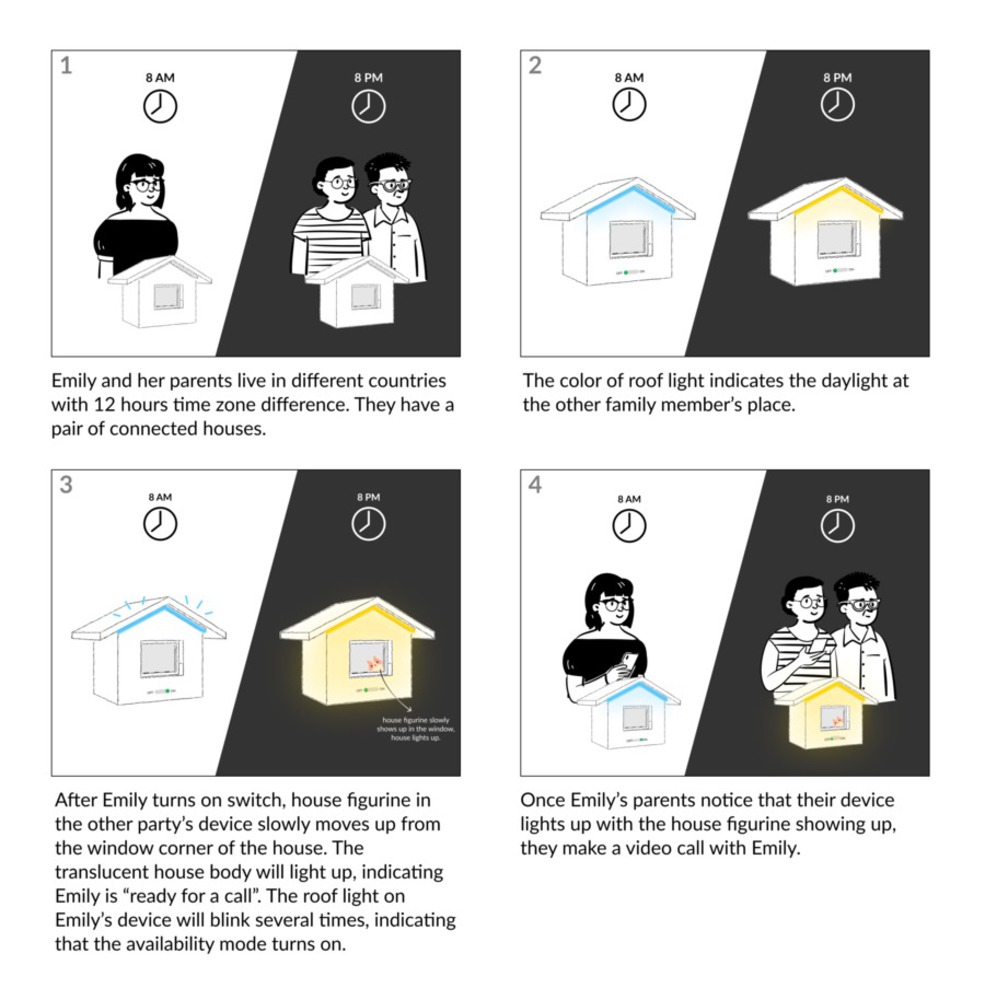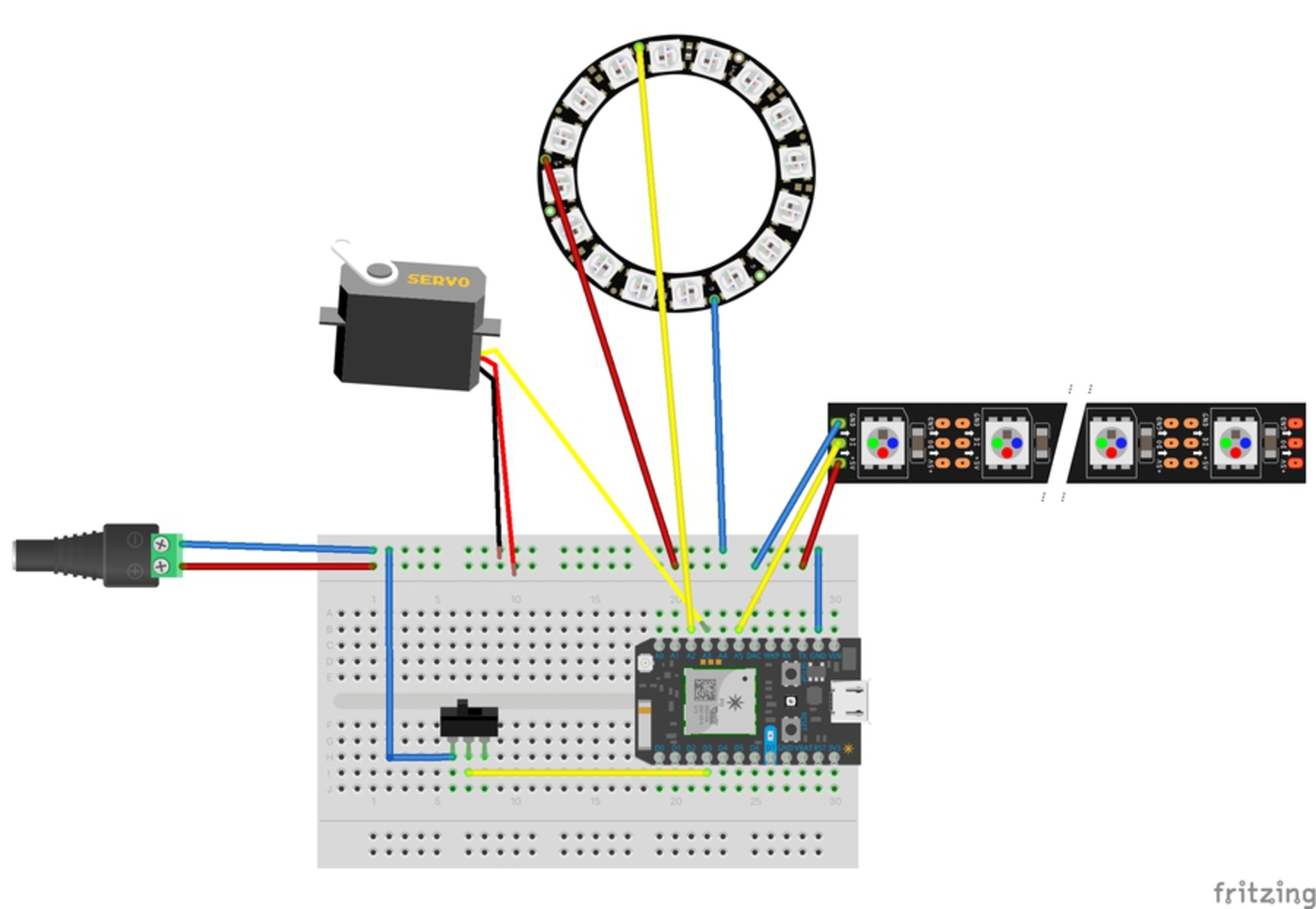Intention:
A statement on the design of the product, intentions and decisions you’ve made. Clearly explain and provide a succinct overview of the exploration space and how the proposed prototype develops a solution, and/or a critical examination of it.
Feeling the sense of love and belonging from family is a fundamental human need that is crucial for the growth and development of each person throughout the life course. However, fulfilling this need can be especially challenging for transnational families as both long physical distances and large time zone differences provide barriers to the sense of social presence among family members. To help members of transnational families better connect with each other, we propose an ambient IoT device that uses LED light and the movement of a physical object to signal availability for synchronous check-ins such as via phone call or video chat.
In addition, to enhance the sense of different time
zones, the device will also indicate the time at the other family member’s
place through the brightness of the light. We anticipate that this device will
not only make it easier for members of transnational families to find a time to
call each other, but by making remote communication embodied and tangible
through the ambient device, it will also foster a better sense of family
presence and connection.





